Saturday, August 31, 2019
Car Sales August 2019: Maruti Suzuki Registers 34% Decline; Volumes Drop For Third Consecutive Month
from NDTV Auto - Latest https://ift.tt/2MNUuBq
Weekly poll results: Realme 5 Pro is a hit, steals the spotlight from the Realme 5

Realme has a future best-seller on its hands - but not two of them. The Realme 5 Pro got a very positive reception in last week's poll - people are happy with the upgrades over the Realme 3 Pro, which launched earlier this year at the same price. The upgrades are mostly in the camera department - going up to a 48MP sensor for the main camera and adding an ultra wide and dedicated macro cameras. The selfie camera dropped in resolution (25MP to 16MP), but the new sensor has larger pixels (0.8µm to 1.0µm). Added splash resistance and a slightly overclocked chipset just about cover...
from GSMArena.com - Latest articles https://ift.tt/2UkEAiS
Anand Mahindra Gifts Thar 700 Limited Edition To Udaipur Prince
from NDTV Auto - Latest https://ift.tt/2MO7YNo
From Bard of Blood to This Is Us: TV Shows to Stream in September
from NDTV Gadgets - Latest https://ift.tt/2Lo2dmN
Tracing the history of the Jeep Wrangler
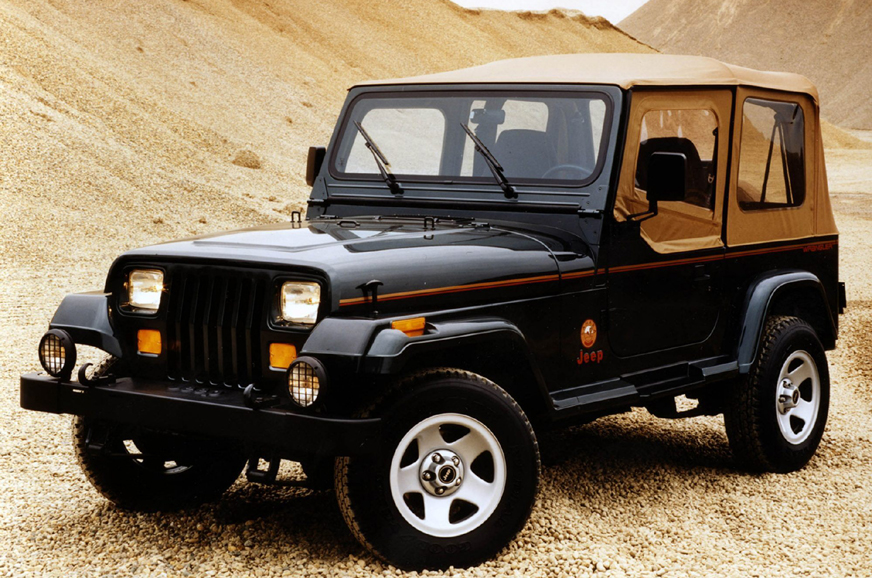
When you think of Jeep, in all probability the first car that comes to mind would be a Wrangler. This can be attributed to the fact that the Wrangler can trace its roots all the way back to the iconic Willys jeep, which many consider as the car that built the Jeep brand. Although the Wrangler is related to the Willys jeep, its lineage more accurately begins with Jeep’s CJ series, which was available for civilians to purchase and was introduced back in 1945. We have traced the Wrangler’s evolution over the years, below.
CJ-2A (1945-1949)
Immediately after the Second World War, Willys recognised the need for a simple, rugged go-anywhere vehicle that farmers and ranchers could use. The resulting CJ-2A was a civilianised version of the military Willys MB and was known as the Universal, because of the multitude of jobs it could fulfil. With a power take-off unit fitted, it could run farm machinery, while a speed governor meant it could creep along at about 6km pulling a plough, yet not overheat.
CJ-3A (1949-1953)
The bread-and-butter of the Jeep range continued with the CJ-3A that developed the civilian theme further. It introduced such luxuries as a one-piece windscreen and twin wipers. It also came with an opening vent just underneath the screen to help with ventilation. For many of its customers, though, the important upgrades were a stronger gearbox, transfer case and rear axle that made the 3A even better off-road. For farmers, there was also a Tractor model that did away with front shock absorbers, lights, windscreen, tailgate and all but the driver’s seat. However, it did have a three-point tail lift to operate machinery.
The CJ-3A was modified and sold as militarised version to the US Army, known as the M38 from 1950 to 1952.
CJ-3B (1953-1968)
In essence, the CJ-3B was an updated version of the CJ-3A and the biggest differentiator between the two models was the bigger ‘F-head’ engine, which made 25 percent more power and 9 percent more torque. This model was produced for a 15-year span. During that duration, Jeep sold around 1.55 lakh units of the CJ-3B.
CJ-5 (1955-1983)
A 28-year production span gives a good idea of just how popular the CJ-5 was, and it remains the Jeep many think of when asked about the brand. A longer wheelbase and overall length came with improvements to ride quality and its ability to deal with off-road work. This chimed with growing leisure use of this type of vehicle in the USA and Jeep answered calls for more power with the Dauntless V6 motor in 1965.
Then in 1973, a pair of V8 engines became available and every off-road fans’ dreams were answered. And if you wondered what happened to the CJ-4 that links the CJ-5 to the earlier CJ-3A, it was a one-off military prototype.
CJ-6 (1955-1981)
The CJ-6 was a longer wheelbase version of the evocative CJ-5. Adding an extra 20-inches of length (about 510mm) between the axles was in direct response to customer demand and Jeep also offered a rear-wheel drive only commercial model with no rear seats.
Changes to the engine line-up mirrored those for the CJ-5, but the 6 was also offered with a 192cu in (3.1-litre) Perkins diesel engine throughout the 1960s to satisfy business users. A relatively low 50,172 CJ-6s were made, which makes them prized by collectors now.
CJ-5 Renegade (1970-1983)
The first Renegade made its appearance in either Wild Plum or Mint Green, both with black stripes running along the side of the bonnet. They also sported eight-inch (20cm) wide wheels for a sportier look and better dirt-busting. The Renegade II followed in 1971 in a similar theme but with different limited edition colours, including the super rare Big Bad Orange.
After that, in 1972, the Renegade became a regular feature of the CJ-5 range complete with 304cu in (5.0-litre) V8 engine, and Trak-Lok limited slip differential.
CJ-7 (1976-1986)
The CJ-7 saw the classic Jeep shape reach full pomp. A marginally longer wheelbase helped provide more cabin space and you could now order a moulded plastic hard-top with metal doors to finally make the Jeep fully weatherproof. Despite the greater comfort and many CJ-7s sporting the Golden Eagle package with large bonnet decal, it could still cover ground off-road, as was proved by a 30-day crossing of the infamous Darien Gap led by Mark Smith.
Wrangler YJ (1987-1996)
The Wrangler YJ marked the beginning of the Wrangler line, which was a replacement for the CJ line. At first glance, it seemed only the headlights had been changed for rectangular units, but under the skin the Wrangler was much more closely linked to the second-generation Cherokee. That meant this new Jeep came with four- and six-cylinder engines, as well as improvements to the 4x4 system such as Command-Trac and Selec-Trak.
Wrangler TJ (1997-2006)
The Wrangler TJ brought back the retro-look and the rounded headlight from the older CJ-7. Though mechanically, around 80 percent of the parts on the TJ had been redesigned when compared to the Wrangler YJ. One of the biggest changes on the Wrangler TJ was the Quadra-coil suspension, which finally replaced the older cars leaf-spring setup. The TJ also got an updated interior, removable doors, a choice of a soft top or removable hardtop and a 4.0-litre straight-six engine from that era’s Cherokee.
Wrangler JK (2007-2018)
The Wrangler JK was launched in 2007 and it came equipped with an all-new frame, refreshed interior and exterior styling, new engine, updated safety equipment and more convenience features. Jeep also introduced a four-door version of the car known as the Wrangler Unlimited. The Unlimited had all the features seen on the Wrangler including removable doors, exposed hinges, fold-down windshield, removable and convertible top options.
Wrangler JK Unlimited (2018-present)
Jeep was riding high in the charts in 2018, and a good deal of this success was down to its core model, the Wrangler. This is where all that brand credibility stems from and it looks like buyers in the USA cannot get enough of it.
In 2017, 1,90,522 of them were sold in its home country alone and the new Rubicon model helped 2018 see 2,40,032 US sales.
Closer to home, Jeep has launched the 2019 Wrangler in India at a price of Rs 63.94 lakh (ex-showroom, pan-India).
Also see:
2018 Jeep Wrangler review, test drive
Click here for all Jeep models, prices, reviews, images, videos and more
Click here for Jeep Wrangler, prices, reviews, images, videos and more
from Autocar India - Cars https://ift.tt/2Zp5M5U
Tracing the history of the Jeep Wrangler

When you think of Jeep, in all probability the first car that comes to mind would be a Wrangler. This can be attributed to the fact that the Wrangler can trace its roots all the way back to the iconic Willys jeep, which many consider as the car that built the Jeep brand. Although the Wrangler is related to the Willys jeep, its lineage more accurately begins with Jeep’s CJ series, which was available for civilians to purchase and was introduced back in 1945. We have traced the Wrangler’s evolution over the years, below.
CJ-2A (1945-1949)
Immediately after the Second World War, Willys recognised the need for a simple, rugged go-anywhere vehicle that farmers and ranchers could use. The resulting CJ-2A was a civilianised version of the military Willys MB and was known as the Universal, because of the multitude of jobs it could fulfil. With a power take-off unit fitted, it could run farm machinery, while a speed governor meant it could creep along at about 6km pulling a plough, yet not overheat.
CJ-3A (1949-1953)
The bread-and-butter of the Jeep range continued with the CJ-3A that developed the civilian theme further. It introduced such luxuries as a one-piece windscreen and twin wipers. It also came with an opening vent just underneath the screen to help with ventilation. For many of its customers, though, the important upgrades were a stronger gearbox, transfer case and rear axle that made the 3A even better off-road. For farmers, there was also a Tractor model that did away with front shock absorbers, lights, windscreen, tailgate and all but the driver’s seat. However, it did have a three-point tail lift to operate machinery.
The CJ-3A was modified and sold as militarised version to the US Army, known as the M38 from 1950 to 1952.
CJ-3B (1953-1968)
In essence, the CJ-3B was an updated version of the CJ-3A and the biggest differentiator between the two models was the bigger ‘F-head’ engine, which made 25 percent more power and 9 percent more torque. This model was produced for a 15-year span. During that duration, Jeep sold around 1.55 lakh units of the CJ-3B.
CJ-5 (1955-1983)
A 28-year production span gives a good idea of just how popular the CJ-5 was, and it remains the Jeep many think of when asked about the brand. A longer wheelbase and overall length came with improvements to ride quality and its ability to deal with off-road work. This chimed with growing leisure use of this type of vehicle in the USA and Jeep answered calls for more power with the Dauntless V6 motor in 1965.
Then in 1973, a pair of V8 engines became available and every off-road fans’ dreams were answered. And if you wondered what happened to the CJ-4 that links the CJ-5 to the earlier CJ-3A, it was a one-off military prototype.
CJ-6 (1955-1981)
The CJ-6 was a longer wheelbase version of the evocative CJ-5. Adding an extra 20-inches of length (about 510mm) between the axles was in direct response to customer demand and Jeep also offered a rear-wheel drive only commercial model with no rear seats.
Changes to the engine line-up mirrored those for the CJ-5, but the 6 was also offered with a 192cu in (3.1-litre) Perkins diesel engine throughout the 1960s to satisfy business users. A relatively low 50,172 CJ-6s were made, which makes them prized by collectors now.
CJ-5 Renegade (1970-1983)
The first Renegade made its appearance in either Wild Plum or Mint Green, both with black stripes running along the side of the bonnet. They also sported eight-inch (20cm) wide wheels for a sportier look and better dirt-busting. The Renegade II followed in 1971 in a similar theme but with different limited edition colours, including the super rare Big Bad Orange.
After that, in 1972, the Renegade became a regular feature of the CJ-5 range complete with 304cu in (5.0-litre) V8 engine, and Trak-Lok limited slip differential.
CJ-7 (1976-1986)
The CJ-7 saw the classic Jeep shape reach full pomp. A marginally longer wheelbase helped provide more cabin space and you could now order a moulded plastic hard-top with metal doors to finally make the Jeep fully weatherproof. Despite the greater comfort and many CJ-7s sporting the Golden Eagle package with large bonnet decal, it could still cover ground off-road, as was proved by a 30-day crossing of the infamous Darien Gap led by Mark Smith.
Wrangler YJ (1987-1996)
The Wrangler YJ marked the beginning of the Wrangler line, which was a replacement for the CJ line. At first glance, it seemed only the headlights had been changed for rectangular units, but under the skin the Wrangler was much more closely linked to the second-generation Cherokee. That meant this new Jeep came with four- and six-cylinder engines, as well as improvements to the 4x4 system such as Command-Trac and Selec-Trak.
Wrangler TJ (1997-2006)
The Wrangler TJ brought back the retro-look and the rounded headlight from the older CJ-7. Though mechanically, around 80 percent of the parts on the TJ had been redesigned when compared to the Wrangler YJ. One of the biggest changes on the Wrangler TJ was the Quadra-coil suspension, which finally replaced the older cars leaf-spring setup. The TJ also got an updated interior, removable doors, a choice of a soft top or removable hardtop and a 4.0-litre straight-six engine from that era’s Cherokee.
Wrangler JK (2007-2018)
The Wrangler JK was launched in 2007 and it came equipped with an all-new frame, refreshed interior and exterior styling, new engine, updated safety equipment and more convenience features. Jeep also introduced a four-door version of the car known as the Wrangler Unlimited. The Unlimited had all the features seen on the Wrangler including removable doors, exposed hinges, fold-down windshield, removable and convertible top options.
Wrangler JK Unlimited (2018-present)
Jeep was riding high in the charts in 2018, and a good deal of this success was down to its core model, the Wrangler. This is where all that brand credibility stems from and it looks like buyers in the USA cannot get enough of it.
In 2017, 1,90,522 of them were sold in its home country alone and the new Rubicon model helped 2018 see 2,40,032 US sales.
Closer to home, Jeep has launched the 2019 Wrangler in India at a price of Rs 63.94 lakh (ex-showroom, pan-India).
Also see:
2018 Jeep Wrangler review, test drive
Click here for all Jeep models, prices, reviews, images, videos and more
Click here for Jeep Wrangler, prices, reviews, images, videos and more
from Autocar India - Cars https://ift.tt/2Zp5M5U
Flashback: the Motorola ROKR E1 was a dud, but it paved the way for the iPhone

Apple began life as a hardware company, selling desktop computers and then adding laptops to its roster. But in 2001 the company started its long journey to becoming a media distribution company - a journey that saw the launch of Apple Music in 2015 and will welcome Apple TV+ later this year. In 2001 Apple released iTunes to the world and a few months later the very first iPod followed. Those two products revitalized the waning company and grew quickly. In 2005 Apple had a commanding 75% share of digital music sales and 80% of MP3 player sales. With over 20 million iPods sold, Steve...
from GSMArena.com - Latest articles https://ift.tt/348wi22
Armoured BMW X5 Protection VR6 revealed
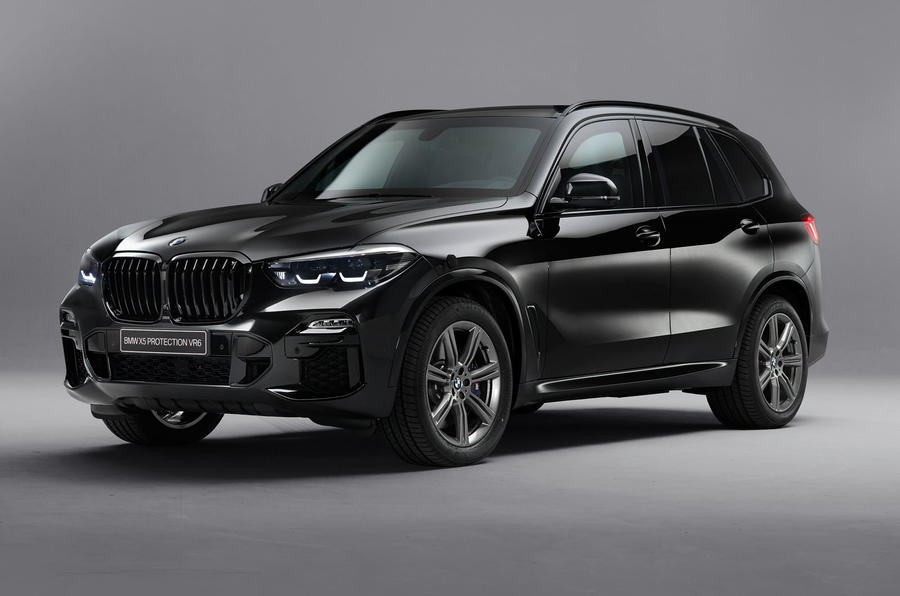
BMW has unveiled an armoured version of its X5 SUV, designed to offer protection against explosives, firearms and attempted kidnappings.
The X5 Protection VR6, named in reference to its certified protection rating, is almost indistinguishable from the standard X5, but is clad all over in high-strength steel armour plating, which overlaps at each panel and trim gap to maximise coverage.
Underneath, a thick aluminium splinter shield protects the powertrain and floor from explosive devices such as hand grenades, while the standard X5’s windows have been replaced with 33mm thick, polycarbonate-reinforced glass.
The glazing features what BMW calls ‘post-blast protective technology’, which offers protection against secondary attacks in the wake of an explosion. Only the driver’s window is electric as standard, although an electric passenger window is an option.
The interior mirrors that of the standard X5 but features a number of additional security mechanisms not available on production cars. The luggage compartment partition, for example, is armoured and provides an additional layer of protection for rear seat passengers.
BMW claims the armoured X5 can protect occupants from a range of firearms, including the AK-47, and explosive blasts of up to 15kg from a distance of four metres. The firm has not said how much more the VR6 weighs than the standard X5.
An optional armoured roof panel can be specified as a means of protecting against drone or aircraft attacks.
Equipment fitted as standard to the VR6 includes an intercom system that uses microphones built into the door mirrors and roof, as well as an attack alarm that automatically locks the doors and windows.
Also offered is a list of factory options, including active seat ventilation and a 360-degree camera, with model-specific additions ranging from a roof-mounted light beacon to armour plating for the battery.
The X5 Protection VR6 is powered by the same twin-turbocharged 4.4-litre V8 found in the new X5 M50i and X7 M50i, producing 530hp and 750Nm. Mechanical changes are relatively minimal, but a self-sealing fuel tank, capable of automatically closing in the event of a puncture, replaces the standard unit.
Despite the weight gain from all the armour protection, BMW claims a 0-100kph time of just 5.9 seconds for the armoured SUV with top speed limited to 210kph.
The VR6 will be produced alongside the standard X5 at BMW’s Spartanburg plant in the US, with pricing set to be revealed at its public debut later this year.
BMW launched the current generation of the X5 in India earlier in this year with a choice of 3.0-litre six-cylinder petrol and diesel engine options. The carmaker has previously offered armoured variants of some of its cars in India including the 7 Series High Security, which was based on the previous generation of the flagship limousine. Therefore, BMW could offer the armoured X5 to customers in India.
Click here for BMW X5 prices, reviews, images, videos and more details
Click here for BMW India models, prices, reviews, images, videos and more
from Autocar India - Cars https://ift.tt/2HCXlsL
Volkswagen T-Sport budget SUV to get two engine options
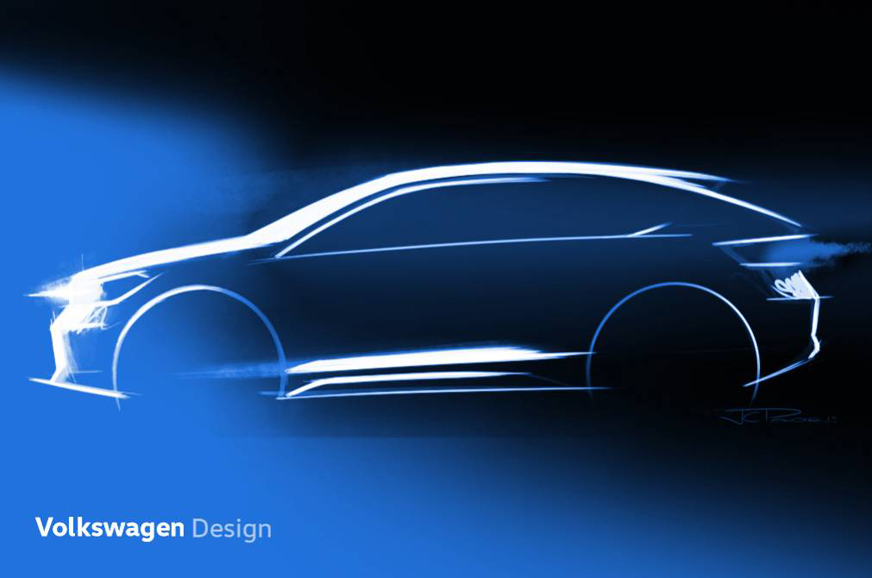
Volkswagen has confirmed that it will build an all-new budget SUV that will sit below the T-Cross in the brand’s global line-up. This new SUV will get a coupe-like profile, a fact that that was teased recently via a hand-drawn sketch tweeted by VW board member Jürgen Stackmann.
This new SUV will most-likely be called the T-Sport and will initially be built in South America. Internally known as the “Urban Coupe”, the new SUV will be engineered in Brazil. While the plan was for the model to be sold only in emerging markets like South America, Russia and China, there are talks now that the SUV will go on sale in Europe as well.
Volkswagen will use the emerging market version of its MQB A0 platform for the T-Sport – this is the same platform that underpins the T-Cross in South America and China. A derivative of this platform, named MQB A0 IN, will underpin the India-bound VW T-Cross and the Skoda Kamiq SUVs. Powering the T-Sport are likely to be a 1.0-litre turbo petrol engine and a 1.6-litre petrol – both will be shared with the latest-gen Polo (it’s not on sale in India). Gearbox choices would include a 5-speed manual and a DSG dual-clutch automatic, along with a 6-speed torque convertor automatic for select markets.
While there is no confirmation on the T-Sport coming to India, the VW Group has confirmed that it will bring the Skoda Kamiq and the T-Cross by 2020. These SUVs will be previewed in concept form at the upcoming Auto Expo 2020. The company will also launch refreshed versions of the Polo and the Vento on September 4, 2019.
Click here for Volkswagen India models, prices, reviews, images, videos and more details
from Autocar India - Cars https://ift.tt/2PygPVU
Xiaomi Announces Redmi K20 Pro Android 10 Beta Programme in India
from NDTV Gadgets - Latest https://ift.tt/32iZOR8
Mercedes C-class gets more features, priced from Rs 46.50 lakh
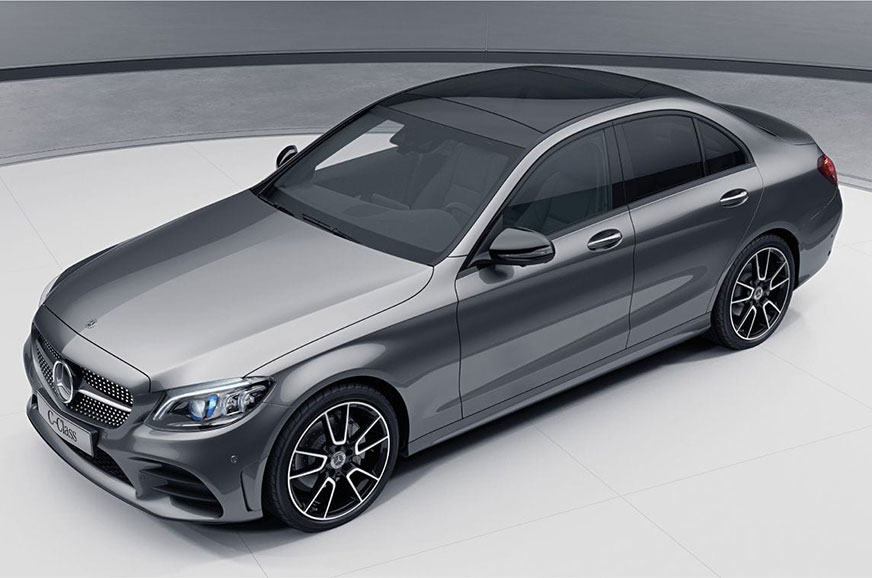
Having introduced a facelift for the current-gen C-class just late last year, Mercedes-Benz has now increased the equipment available on the diesel offerings - the C 300d AMG Line and C 220d Progressive - which are now priced at Rs 49.50 lakh and 46.50 lakh, respectively (ex-showroom India). Prices have gone up by Rs 1 lakh for the C 300d AMG Line and Rs 2.25 lakh for the C 220d.
Starting with the C 300d AMG Line, it now features Mercedes’ ‘Night Package’, which essentially adds high-gloss black inserts on the louvre on the front bumper and an AMG specific front apron and rear bumper. The pack also includes 18-inch AMG 5-spoke alloy wheels finished in black. Other new features include a wireless phone charger in the central console, a Midline sound system with 9 speakers paired with a 225 W amplifier, and lastly a 12.3-inch all-digital instrument cluster with three display styles – Classic, Progressive and Sporty.
Coming to the new features added to the C 220d Progressive, these include a wireless phone charger, a Midline sound system, a 12.3-inch all-digital instrument cluster and a memory package for the driver and front passenger’s electrically adjustable seats, which can be programmed to store up to three different seating positions.
In terms of engines, both the C 220d Progressive and the C 300d AMG Line come with a 2.0-litre, four-cylinder BS6-compliant turbo-diesel engine. However, the engine produces 245hp and 500Nm of torque in the C 300d while making 194hp and 400Nm of torque in the C 200d. Both cars have Mercedes’ 9G-Tronic automatic gearbox as standard.
The Mercedes C-class rivals the likes of the BMW 3 Series, Audi A4 and the Jaguar XE in the Indian market.
Also see:
2018 Mercedes-Benz C 300d India review, test drive
2018 Mercedes-Benz C220d review, test drive
Click here for Mercedes Benz India models, prices, reviews, images, videos and more
Click here for Mercedes Benz C Class, prices, reviews, images, videos and more
from Autocar India - Cars https://ift.tt/2ZoPTwd
OnePlus 7T Pro, McLaren Edition Renders and Specifications Surface Online
from NDTV Gadgets - Latest https://ift.tt/2ZurKEE
Samsung Galaxy Note 10+ Camera Review
from NDTV Gadgets - Latest https://ift.tt/2NI6HYc
General Motors Cuts Some 350 Jobs In Thailand Operations
from NDTV Auto - Latest https://ift.tt/32rfSAr
Motorola One Zoom detailed specs surface

The Motorola One Zoom has leaked a few times before so we already know what it will look like. We also know a few of its specifications, but the latest leak completes the picture, leaving very little to the imagination. The One Zoom will be powered by the Snapdragon 675 SoC paired with 4GB RAM. It will have 128GB storage and run Android Pie out of the box. But, do note that it won't be a part of the Android One program and will come with deep Alexa integration. The One Zoom will flaunt a 6.4" 19:9 FHD+ Super AMOLED display with a fingerprint reader embedded in it. The screen will...
from GSMArena.com - Latest articles https://ift.tt/2LhGrku
SIAM Welcomes FM's Second Set of Announcements for Reviving Growth
from NDTV Auto - Latest https://ift.tt/2HPJxeL
Ford EcoSport BS6 road testing begins
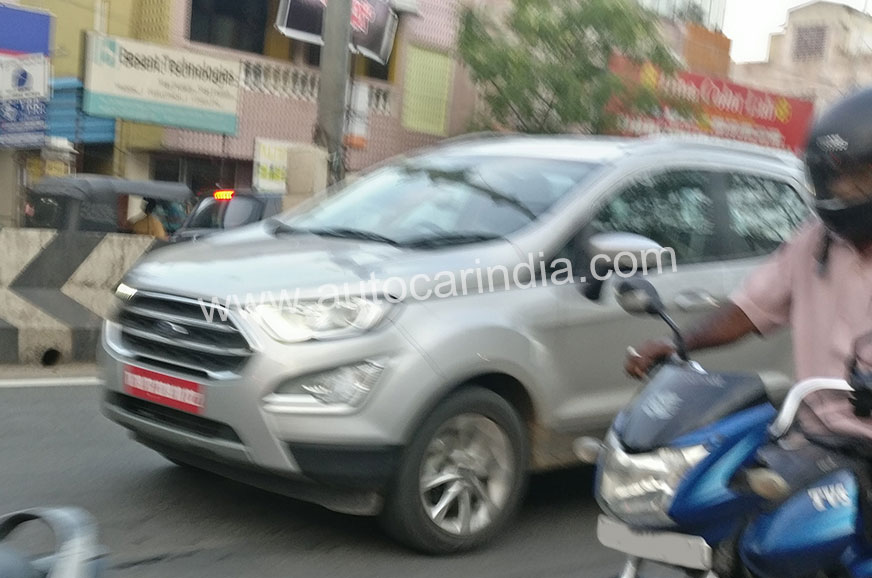
Ford India has begun testing BS6-compliant engines for its EcoSport compact SUV. A test mule was recently spotted on the outskirts of Chennai by our reader Manav Ramchandran. The current-gen EcoSport received a price and variant update in June this year. The Ford EcoSport range in India is powered by a 100hp, 1.5-litre four-cylinder turbo-diesel engine that’s paired to a 5-speed manual gearbox; a 123hp, 1.5-litre three-cylinder petrol that can be had with either a 5-speed manual or a 6-speed torque converter automatic gearbox; and a 125hp, 1.0-litre three-cylinder turbo-petrol that’s coupled with a 6-speed manual gearbox only. Ford will be updrading the 1.5-litre Dragon engine and the ubiquitous 1.5-litre diesel motor to meet BS6 norms. However, as the cost of updrading the 1.0-litre Ecoboost to BS6 norms are not justified by its sales, Ford will discontinue the motor in the India-spec EcoSport. This engine will be replaced by Mahindra's 1.2-litre turbo petrol engine that also sees duty on the XUV300 compact SUV as part of the collaboration the two auto brands that was first announced back in 2017. The current-gen EcoSport is one of the oldest models in the segment and now faces stiff competition from the likes of the newer entrants like the Hyundai Venue, Mahindra's XUV300, Tata Nexon and the Maruti Suzuki Vitara Brezza in the Indian market. Expect Ford to introduce BS6-compliant EcoSport range closer to the April 2020 deadline.
Alse see:
Click here for Ford India models, prices, reviews, images, videos and more
Click here for Ford EcoSport, prices, reviews, images, videos and more
from Autocar India - Cars https://ift.tt/2ZD9nbB
Friday, August 30, 2019
US to Use Fake Social Media to Check People Entering Country
from NDTV Gadgets - Latest https://ift.tt/2MMDHyz
YouTube Said to Be Fined Over Children's Privacy Violations
from NDTV Gadgets - Latest https://ift.tt/349Xq0R
Chandrayaan-2 Closer to Moon With Orbit Change
from NDTV Gadgets - Latest https://ift.tt/2LafNew
Amazon, Trader Group in Public Spat Over Discounts in India
from NDTV Gadgets - Latest https://ift.tt/32hGXFQ
Telegram Moves to Protect Identity of Hong Kong Protesters
from NDTV Gadgets - Latest https://ift.tt/2LeVHyw
Google Contract Workers Vote to Form a Union in the US
from NDTV Gadgets - Latest https://ift.tt/2Uh5Qik
Toyota Won't Build Cars At UK Factory The Day After Brexit
from NDTV Auto - Latest https://ift.tt/2ZB5ybe
Volkswagen Overstated Fuel Economy On 98,000 U.S. Vehicles, Will Repay Consumers
from NDTV Auto - Latest https://ift.tt/2HPywdp
Twitter CEO and Co-Founder Jack Dorsey's Account Was Hacked
from NDTV Gadgets - Latest https://ift.tt/2ZIiUOE
iPhone 11 family to unsurprisingly become available on September 20

Apple is unveiling the iPhone 11, iPhone 11 Pro, and iPhone 11 Pro Max at a special event on September 10. But that's the announcement. You may be wondering exactly when you'll be able to purchase one of the new devices. Well, wonder no more. According to a source working at a major US carrier, pre-orders for the trio are set to start on September 13. That's the Friday after the announcement, and it comes as no surprise that Apple would start taking pre-orders then - because it's been doing the same thing for years. Exactly as unsurprising is the rumored release date of the three...
from GSMArena.com - Latest articles https://ift.tt/32jGaEx
Harley-Davidson Battle of the Kings 2019 winner announced
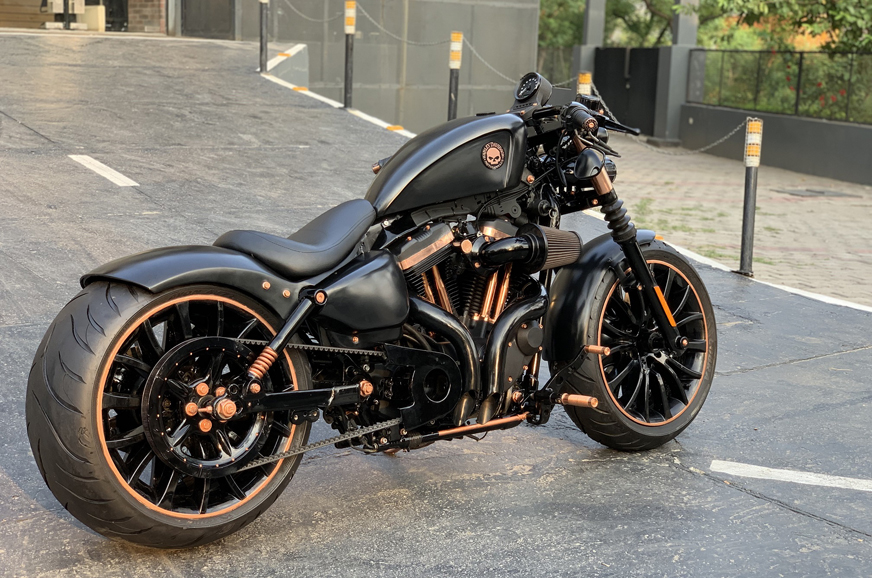
The Battle of the Kings is a custom bike build-off organised by Harley-Davidson, giving dealers the opportunity to take a stock motorcycle and modify it. The only restriction is a budget no more than half the cost of the original model. The second season has just concluded in India and the Grand Trunk Harley-Davidson dealership in Punjab has won it with their custom Iron 883 called the Goliath.
The selection process
This year’s event saw 12 dealerships across the country participate with their own custom projects, with the winner selected by means of a public online vote. A similar selection process is conducted in various countries across the globe and the winners from each region are subject to another round of selection, also via an online public vote. The top picks from that lot will be sent to EICMA 2019, where the final winner will be picked by a selection panel.
The Goliath
The Goliath started off as an Iron 883, but in its current form, looks little like the original bike. We spoke to a representative from the Grand Trunk Harley-Davidson team and some of the changes made to the bike include a Screamin' Eagle Stage IV conversion kit that bumps up power and torque. The Harley-Davidson website states that the kit includes Sportster High-Flow air cleaner kit, XL1200 cylinder heads, XL1200 cylinders, XL1200 pistons and rings, a heavy duty clutch spring, and a top-end gasket kit, essentially converting it to 1200cc spec. The bike also underwent changes to its chassis in the form of a longer swingarm to accommodate the wider larger tyres and a lowered suspension.
Also see:
2020 Harley-Davidson Pan America, Street Fighter images leaked online
Harley-Davidson LiveWire unveiled in India
from Autocar India - Bikes https://ift.tt/2ZrvTsL
Android 10's September 3 release date confirmed by Canadian carrier

A few days ago a couple of chats with Google support reps surfaced telling us to expect the official release of Android 10 to Pixels to happen on September 3. And today a slip-up by Canadian carrier Rogers has seemingly confirmed the rollout's date. For a short while, Rogers' public OS upgrade schedule included the lines you can see screenshotted below. Apparently this carrier didn't get the memo of Android 10 being the official name of the release formerly known as Android Q, but other than that, it's all there, black on white. Realizing the mistake of making such information...
from GSMArena.com - Latest articles https://ift.tt/2Ld4qm8
Suzuki, TVS gain scooter market share in April-July 2019

The scooter market, not too long ago the darling of the two-wheeler industry, has not been spared the trials and tribulations of a sales slowdown. In July 2019, the segment saw total dispatches of 5,26,504 units (-12.10 percent) and in the April-July 2019 period, a total of 2,040,706 units (-15.58 percent). Its overall share of the two-wheeler market remains a good 31 percent though.
Honda Motorcycle & Scooter India (HMSI) remains the unassailable scooter market leader due to the powerful brand presence of the Activa, but the fact of the matter is that its sales are slowing sharply. In the first four months of FY2020, HMSI sold a total of 11,48,794 units, down 21.18 percent (April-July 2018: 14,57,537). In the process, its scooter market share has reduced by about 4 percent to 56.29 percent from 60.30 percent in April-July 2018.
In the opening month of FY2020, Honda's best-seller sold 2,10,961 units, a far cry from the year-ago sales (April 2018: 3,39,878) and down 38 percent year-on-year. In May 2019, it saw 2,18,734 units go out to showrooms, down 19.7 percent (May 2018: 272,475) and in June 2019, a total of 2,18,734 scooters were sold, down 19.72 percent (June 2018: 272,475). Clearly, the ball is in the Honda's court to do something quickly to arrest the fall in the Activa's sales. The Japanese major, which is readying for the BS6 era, unveiled its – and India's first – BS6-compliant product, not surprisingly, the Activa.
But HMSI is aggressively working on new growth strategies, and is targeting semi-urban and rural India to drive up sales. Earlier this year, it tied up with Cholamandalam Investment & Finance Co for offering retail finance. Cholamandalam’s strong nationwide presence with over 1,000 branches, most of them rural and semi-urban areas, and a base of a million consumers should help.
Another sizeable market share drop is with Hero MotoCorp, which sees its share drop to 7.59 percent from 10.02 percent a year ago. The company sold a total of 1,54,922 units in April-July 2019, which marks a sharp YoY decline of 36 percent.
Hero MotoCorp is looking to cash in on the growing demand for 125cc scooters. In May this year, the company launched the Maestro Edge 125 in three variants – a carburettor drum brake variant priced at Rs 58,500, a carburettor disc brake variant at Rs 60,000 and a fuel-injected variant at Rs 62,700 (ex-showroom, Delhi). Hero’s other offering in the 125cc segment, after the Destini 125, faces competition from other similar scooters like the TVS NTorq (Rs 59,900) and the Honda Grazia, for which prices start from Rs 60,723.
The two other scooter makers that are benefiting from the slowing sales of HMSI and Hero are TVS Motor Co and Suzuki Motorcycle India. TVS Motor Co sold a total of 3,81,762 units in April-July 2019, down a marginal 1.52 percent YoY, which can be put down to the poor consumer sentiment stress in the market. However, the company saw its market share grow by 2.67 percent to 18.71 percent from 16.04 percent a year ago.
On June 7, TVS launched two variants of the Jupiter ZX – drum and disc. While the drum-brake model has been priced at Rs 56,093, the front disc brake-equipped version costs Rs 58,645 (ex-showroom, Delhi). Both come equipped with TVS’ version of combined brakes, called SBT, as standard. The ZX variant now gets many new features, including an LED headlight and a digi-analogue instrument cluster.
With the Jupiter and NTorq 125 maintaining good sales traction in the market, the company would be looking forward to the festive season to notch higher numbers.
The biggest market share gainer is Suzuki Motorcycle India, with a sterling performance in April-July 2019. With 2,25,741 scooters sold, it is the sole scooter maker to post positive numbers and notches a robust 26.34 percent growth YoY. This performance sees the company make the highest gains of 3.67 percentage basis points in the April-July period to take 11.06 percent market share, compared to 7.39 percent a year ago.
The Access 125 has turned out to be a game-changer for the company. This popular buy, which is also Suzuki's best-selling scooter, seems to be closing the gap with the Jupiter and is a consistent No. 3, after the Activa and Jupiter. On July 16, Suzuki launched a refreshed version, the Access 125 Special Edition (SE) equipped with a disc brake variant. It is powered by the same all-aluminium, four-stroke, single-cylinder 124cc engine that develops 8.7hp and 10.2Nm of torque.
TVS Motor and Suzuki were the two OEMs which, due to their Jupiter and Access scooters respectively, made smart gains in scooter market share in what was a tough FY2019. Bajaj Auto though, despite not being in the scooter market, was the biggest market share gainer last fiscal. Will they continue to maintain that growth trajectory in FY2020 or will Honda and Hero spring some surprises to rev up their sales? Stay tuned.
from Autocar India - Bikes https://ift.tt/32muVLD
iPhone 11, iPhone 11 Pro, and iPhone 11 Pro Max have all their specs seemingly leaked

After many months of rumors, purported leaks, and speculation, Apple will finally make the new trio of iPhones official on September 10. And today out of China comes a new report that seems to leak all of the new devices' specs. Before we go into the actual information, don't forget to take all of this with a healthy serving of salt - it's just an unconfirmed rumor at this point. That said, a lot of the stuff in it lines up with what we've heard in the past, and the rest is at least plausible. iPhone 11 This is the successor to the iPhone XR, and hence Apple's entry-level option for...
from GSMArena.com - Latest articles https://ift.tt/2LfwPqm
Maruti Suzuki XL6 accessory list revealed
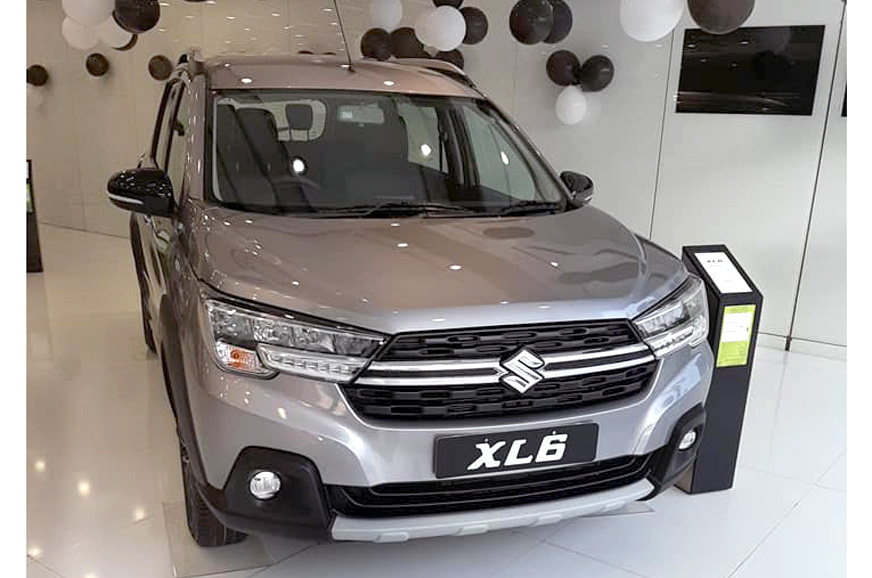
Just a few weeks ago, Maruti Suzuki launched the premium iteration of the Ertiga, the XL6, in India. Priced from Rs 9.80 lakh and going up to Rs 11.46 lakh (ex-showroom, Delhi), the XL6 features a more crossover-inspired look as compared to the Ertiga, along with featuring added kit and, crucially, a six-seat layout.
Available solely with the 1.5-litre mild-hybrid petrol engine from the Ertiga, the XL6 is available in only two trim levels – Zeta and the fully-loaded Alpha – and can be had with either a 5-speed manual or 4-speed automatic gearbox with both trim levels.
Maruti has now released a list of accessories that customers can use to customise their XL6. The entire list can be accessed via the manufacturer’s online configurator that is available on the Nexa website.
For the exterior, the configurator allows for the addition of trim along the lower door padding, along the window line and the lower lip of the number plate housing. Prices range from Rs 750 for the number plate garnish to Rs 2,850 for the window frame kit. Also available are door visors for an additional Rs 3,450 and a tailgate-mounted rear spoiler at Rs 4,500-4,900 (the higher price is for a spoiler that is not finished in black).
Inside the cabin, Maruti offers an interior styling package costing about Rs 8,200. The kit gets you door handles finished in the same pattern as the inserts on the dashboard. Also available are floor mats for an additional Rs 2,400.
Interestingly, while the stock XL6 gets Maruti’s SmartPlay Studio infotainment system as standard, the configurator does offer a choice of aftermarket touchscreen units with prices ranging from Rs 14,990, all the way to Rs 29,990.
Due to its premium positioning - and features such as LED headlamps and leatherette seat covers - XL6 prices start slightly higher than top-spec Ertigas. With these customisation options, there's another clear difference between the two Maruti MPVs.
Click here for Maruti Suzuki XL6 prices, reviews, images, videos and more details
Click here for Maruti Suzuki models, prices, reviews, images, videos and more details
from Autocar India - Cars https://ift.tt/2LcTPrl
Thursday, August 29, 2019
Tesla Raises Prices For Some Vehicles In China
from NDTV Auto - Latest https://ift.tt/2LuBPaX
Revolt’s incredible pricing strategy explained
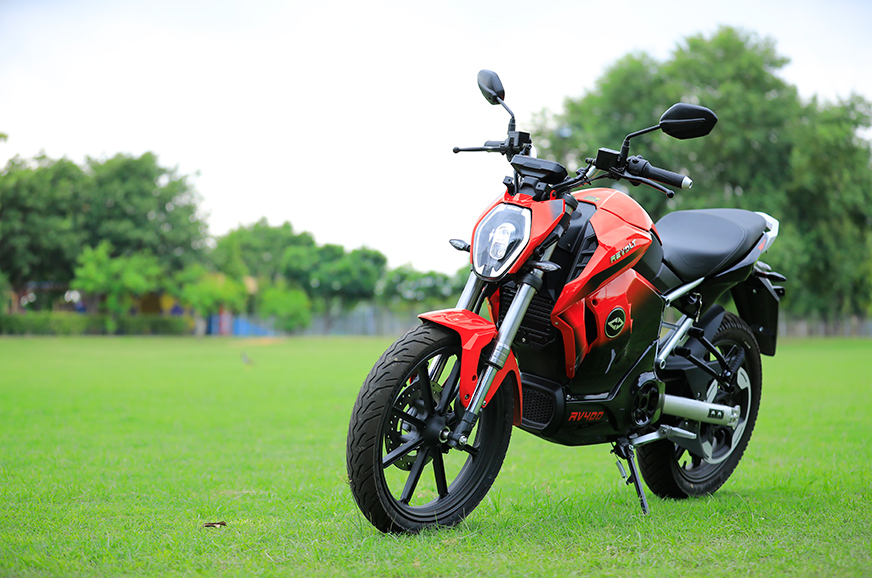
The recently launched Revolt electric bikes find their roots in China, but that doesn’t change the fact that they offer a heap of equipment for the price. With things like keyless-start, a world of app-connected features, a USD fork and more, the Revolts are easily the best-specced motorcycles for the money. We knew all along that they would be very well priced, but Revolt pulled a shocker when they announced the pricing structure.
Taking a leaf out of the world of subscription-based purchase plans for mobile phones (like you find in the USA), Revolt’s EVs are sold on a monthly subscription programme. Essentially, you have to pay a monthly sum for a period of three years. At this point, you probably have some questions and we’re going to address them one by one:
How much do I have to pay?
First off, there’s is no down payment. Instead of one big payment, you pay small amounts as you go along. Rs 3,999 per month is what Revolt is charging for the top-spec RV 400. For Rs 3,499 a month, you can get a lower RV 400 variant that we’re told misses out on the fake exhaust sound and the app-enabled remote-start features. However, Revolt then surprised us with the reveal of a more basic, lower-spec RV 300 model that comes with a 1.5kW motor and a smaller battery as well. The RV 300 will cost Rs 2,999 per month for a period of three years.
Can I buy it outright?
No. At the moment, if you want a Revolt electric motorcycle, you have to follow this purchase model.
Who owns the vehicle?
This is not a lease or a rental system and the ownership of the vehicle will be yours. Revolt tells us that you need to simply walk into the showroom with an Aadhar card as proof. How the company plans to screen potential customers still remains to be confirmed but we understand that the customer’s credit scores will be evaluated as well. However, there is no clarity on what qualifies as the cut off. In simple terms, once the formalities have been completed and the first payment has been made, the bike will be yours and it will be legally registered in your name.
What does the price include?
Revolt says that registration will be free in certain states – including Delhi: the introductory market. As part of an introductory offer, Revolt says it will cover the maintenance costs as well as consumables like tyres (one set) and brake pads for 3 years or 30,000km. Further, introductory offers include a 5 year/75,000kmn warranty on the vehicle, an 8 year/1.5 lakh km warranty on the battery and Revolt will even take care of the government-mandated insurance requirements. However, there isn’t any clarity yet on how long this introductory offer is valid for or what will be offered once it expires. What we do know is that both the RV 400 and RV 300 qualify for these offers.
The company has also revealed that it won’t be charging customers who use its ‘Revolt Switch’ battery swap feature till December 31, 2019. Revolt Switch essentially allows you to swap your battery for a fully-charged one at a number of locations around the city.
What if I want to sell the bike?
Revolt says that you can sell the bike just as you would a normal vehicle and the next customer simply has to pick up where you left off with the payments. We assume a change of ownership will need to be notified to the company so they can update the owner’s payment credentials in their database. This is actually a good thing because it helps accurately keep track of second-hand vehicle ownership details. The second hand database is very unorganised at the moment as far too many people buy second hand bikes and don’t bother changing the registration details to their name.
What if I don’t make the payments?
If you have a DTH satellite TV connection in your house, you’ve probably experienced this already. The company will send you a couple of notifications following which, the service will be disconnected. Since the electric bike is always connected via the inbuilt SIM, Revolt will send you a couple of warnings before it disables the motorcycle. Functionality will be restored the moment you make your overdue payments. Of course, there will be numerous attempts made to defeat the system and it will be interesting to see how Revolt manages to stay on top of the Indian love for ‘jugaad’.
Sounds like a good deal?
Yes, it almost sounds too good to be true! Simple math will tell you that over a three-year period, the top-spec RV 400 will come to about Rs 1.43 lakh, which is a fair bit more than an Ather 450 (Rs 1.14 lakh on-road, Bengaluru). But the fact the Revolt is covering almost all the service related costs for three years is tempting, although Ather counters this by providing its customers free access to charging stations for some time. There’s also the fact that Ather’s expansion plans are frustratingly slow while Revolt plans to be in seven cities within the next four months.
Where the Revolt strategy really changes the game is that it opens the door to a whole new segment of people for whom the thought of spending this much money is daunting. If this sounds tempting to you and you want to know more about what the Revolt RV 400 is like click the links below.
Also see:
Revolt RV 400 review, test ride
from Autocar India - Bikes https://ift.tt/2zy9XwJ
Volkswagen To Invest $577 Million In Brazil Auto Plant
from NDTV Auto - Latest https://ift.tt/2LhOdLe
More Jobs In Auto Lost, Toyota And Hyundai Cut Production
from NDTV Auto - Latest https://ift.tt/2Zmz5pE
Waymo Urges US to 'Promptly' Remove Barriers to Self-Driving Cars
from NDTV Gadgets - Latest https://ift.tt/2L77e3Z
Dell Beats Profit Estimates on Higher Desktop Sales
from NDTV Gadgets - Latest https://ift.tt/2Lkx57q
Watch the Trailer for Netflix's Bill Gates Docu-Series, Out in September
from NDTV Gadgets - Latest https://ift.tt/2zwfsfx
LG Q70 With Hole-Punch Display, Dedicated Google Assistant Button Launched
from NDTV Gadgets - Latest https://ift.tt/2PmJugw
'Hey, Google! Let Me Talk to My Departed Father.'
from NDTV Gadgets - Latest https://ift.tt/2ZA7yfL
Valve Said to Fight EU Antitrust Charges, 5 Videogame Publishers to Settle
from NDTV Gadgets - Latest https://ift.tt/2PoQuJU
Renault Triber vs rivals: Specification comparison
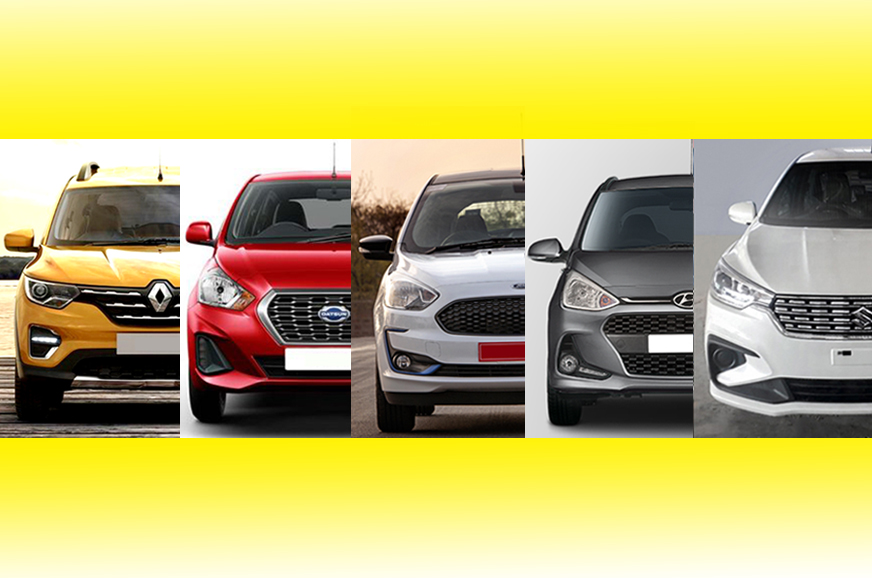
The all-new Renault Triber has just been launched in our market with the base trim priced at Rs 4.95 lakh and the top-spec variant coming in at Rs 6.49 lakh. A compact seven-seater, the Renault Triber is only offered with a single engine-gearbox combination, for now. Available in four trim levels – RxE, RxL, RxT and RxZ – the Triber is somewhat uniquely placed. Its sub-4m, seven-seat status puts it in direct contention with the Datsun Go+, while some may see its ability to seat seven as a more affordable option to the Maruti Suzuki Ertiga in petrol guise. However, its price point and positioning in the market is such that the Triber will also rival budget hatchbacks such as the Maruti Suzuki Wagon R, along with the petrol-powered versions of the Hyundai Grand i10 and Ford Figo. Let’s see how the Triber stacks up against these rivals, on paper.
Dimensions
The Ertiga is the only model here that does not come with a sub-four-metre length and is understandably the largest model on nearly every metric. However, the Triber is wider than even the Ertiga (by 4mm) and stands about 2mm more off the ground. From among the compact cars, the Triber is the longest, widest and has the longest wheelbase – this bodes well for the amount of interior space on offer with the Renault, especially with the flexible seating configuration on offer upping practicality. The model’s boot space is also the largest (at least in five-seat form) when compared to like-size rivals and it comes with a comparable fuel tank volume. The Ford Figo has the thickest tyres and largest wheels here though it is interesting to note that Maruti Suzuki’s Wagon R is the tallest model but has the lowest kerb weight and the smallest fuel tank. The Hyundai’s wheelbase is the shortest here and its boot space is the least. The Datsun Go+ is neither the largest nor the smallest on any metric but holds the middle ground – its tyres are among the smallest here though.
| Renault Triber vs Rivals: Dimensions | ||||||
| Triber | Go+ | Figo | Grand i10 | Wagon R | Ertiga | |
| Length | 3990mm | 3995 mm | 3941mm | 3765mm | 3655 mm | 4395mm |
| Width | 1739mm | 1636 mm | 1704mm | 1660mm | 1620 mm | 1735mm |
| Height | 1643mm | 1507 mm | 1525mm | 1520mm | 1675 mm | 1690mm |
| Wheelbase | 2636mm | 2450 mm | 2490mm | 2425mm | 2435 mm | 2740mm |
| Ground Clearance | 182mm | 180mm | 174mm | 165 mm | 170mm | 180mm |
| Boot capacity | 84-625 litres | 48-347 litres | 257 litres | 256 litres | 341 litres | 209-803 litres |
| Tyre size | 165/80 R14 | 165/70 R14 | 195/55 R15 | 165/65 R14 | 165/70 R14 | 185/65 R15 |
| Kerb Weight | 947kg | 882kg | 1026-1078kg | 966kg | 820-830kg | 1160kg (petrol-MT) |
| Fuel tank | 40 litres | 35 litres | 42 litres | 43 litres | 32 litres | 45 litres |
Engines and gearboxes
The Triber’s 1.0-litre motor is among the least powerful models here – the Wagon R 1.0 is the only model that has lower output figures, though the Dastun Go+’s 1.2-litre does make less power. Taking into consideration its relatively higher kerb weight, the Renault also has the lowest power-to-weight and torque-to-weight figures, which could indicate a relative lack of performance in comparison. The Ford Figo easily out-powers all the competition here – even the Ertiga’s 1.5-litre motor loses out in comparison to the Ford’s 1.5 motor – and it has the highest power-to-weight and torque-to-weight ratios. On paper, it seem like the Wagon R 1.2 should provide peppy performance (our review corroborates this). The Grand i10 matches the Wagon R 1.2 in terms of output and is nearly as efficient, though its higher kerb weight is telling. However, due to its larger fuel tank, the Hyundai can go further on a tank of gas than any of its rivals barring the much bigger Ertiga.
| Renault Triber vs Rivals: Engines and Gearboxs | ||||||
| Triber | Go + | Figo | Grand i10 | Wagon R | Ertiga | |
| Displacement | 999cc | 1198cc | 1194cc/1497cc | 1197cc | 998cc/1197cc | 1462cc |
| Engine type | 3 cyls | 3 cyls | 3 cyls/3 cyls | 4 cyls | 3 cyls/4 cyls | 4 cyls |
| Power | 72hp | 68hp | 96hp/123hp | 83hp | 68hp/83hp | 105hp |
| Torque | 96Nm | 104Nm | 120Nm/150Nm | 114Nm | 90Nm/113Nm | 138Nm |
| Manual gearbox | 5-speed | 5-speed | 5-speed | 5-speed | 5-speed | 5-speed |
| Automatic gearbox | - | - | 6-speed torque convertor | 4-speed torque convertor | 5-speed AMT | 4-speed torque convertor |
| Fuel Efficiency | 20kpl | 19.83kpl | 20.4kpl/16.3kpl | 19.77kpl | 22.5kpl/20.52kpl | 19.01kpl/17.99kpl |
| Emission Standard | BS4 | BS4 | BS4 | BS4 | BS4/BS6 | BS6 |
| Power-to-weight | 76.03hp/tonne | 77.10hp/tonne | 93.57hp/tonne/114.1hp/tonne | 85.92hp/tonne | 82.93hp/tonne/100hp/tonne | 90.51hp/tonne |
| Torque-to-weight | 101.37Nm/tonne | 117.91Nm/tonne | 116.96Nm/139.15Nm | 118.01Nm/tonne | 109.76Nm/tonne/136.14Nm/tonne | 118.96Nm/tonne |
| Range | 800km | 694km | 816km/685km | 850km | 720km/657km | 855km/810km |
Prices
Besides the Maruti’s Wagon R 1.2 and Ertiga, all other engines here are BS4-compliant and will be upgraded later, which will make a difference to their respective price tags.
For now, it is apparent that the Datsun Go+ is by far the cheapest 7-seater here, with the Wagon R’s price undercutting the Renault Triber and Hyundai Grand i10 by a significant margin. From the sub-four-models, the Figo is the priciest but offers the most in terms of performance and is decently large besides. The Ertiga is in a league of its own in this comparison, especially in terms of price.
| Renault Triber vs Rivals: Prices | ||||||
| Triber | Go + | Figo | Grand i10 | Wagon R | Ertiga | |
| Petrol | Rs 4.95-6.49 lakh | Rs 3.87-5.94 lakh | Rs 5.23-7.70 lakh | Rs 5.02-7.09 lakh | Rs 4.34-5.33 lakh | Rs 7.55-10.06 lakh |
Also see:
Renault Triber official accessories revealed
Renault sees rural demand boosting Triber sales
Renault Kwid facelift launch next month
from Autocar India - Cars https://ift.tt/32gjrsV
Motorola One Action Goes on Sale in India Today at 12pm Via Flipkart
from NDTV Gadgets - Latest https://ift.tt/2HwOzg0
India Said to Woo Firms Like Apple to Capitalise on US-China Trade War
from NDTV Gadgets - Latest https://ift.tt/2MJCNms
2020 KTM 1290 Super Adventure Could Feature Radar-Assisted Tech
from NDTV Auto - Latest https://ift.tt/30IjJbO
OnePlus TV will get at least three years of software updates

The OnePlus TV is finally launching next month, in India first, after years of development and speculation. Over the past few days more and more information about it has trickled down, and now we get another piece of the puzzle. OnePlus CEO Pete Lau has announced that the TV will get at least three years of Android TV software updates. It's the first time (that we know of) that any manufacturer of TVs using Android TV has publicly committed to an update support window like this, and that's definitely good to see. If you thought the situation with Android updates for phones (not made...
from GSMArena.com - Latest articles https://ift.tt/30KC5sE
Apple to Supply Parts to Independent Repair Shops for First Time
from NDTV Gadgets - Latest https://ift.tt/2zwDbfv
Norton Dominator Street Limited Edition Unveiled
from NDTV Auto - Latest https://ift.tt/3477R53
Saaho Out Now in India in Hindi, Tamil, Telugu, and Malayalam
from NDTV Gadgets - Latest https://ift.tt/2L6vmnl
Samsung wants to release the Galaxy Fold in Korea on September 6

According to a new report from Samsung's home of South Korea, we might be closer to the actual availability in stores of the Galaxy Fold than you may think. So far the company has only officially confirmed that it's going to release the Fold at some point in September. Now though, sources inside the mobile industry have told news agency Yonhap that Samsung is actually in talks with the Korean carriers to make the Galaxy Fold available in the country on September 6. This is apparently a new development, as the company initially intended for the launch to happen later in the...
from GSMArena.com - Latest articles https://ift.tt/2HtAIab
T-Mobile's Samsung Galaxy J7 Star is now tasting Android 9 Pie with One UI

Another day, another Samsung smartphone gets the update to Android 9 Pie. This time around it's T-Mobile's Galaxy J7 Star on the receiving end of Google's latest OS (for a few more days), which comes alongside the Korean company's innovative new user experience dubbed One UI. If the name doesn't sound familiar, know that Galaxy J7 Star is the name under which T-Mobile chose to sell a phone that is otherwise better known as the Galaxy J7 (2018) in most parts of the world. The update arrives over-the-air as a 1.1GB download, which means you may be safest trying to grab it over Wi-Fi....
from GSMArena.com - Latest articles https://ift.tt/30M1lyK
2019 Porsche Macan Turbo revealed
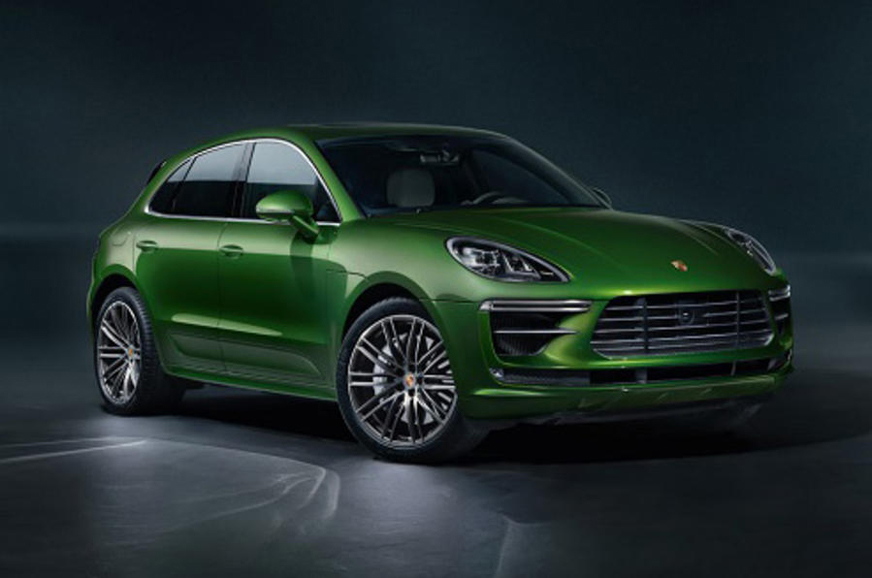
Porsche has revealed the flagship Turbo model of its revised Macan range, ahead of the model's public debut at the 2019 Frankfurt motor show, which will be held from September 10-22.
Sitting above the mid-range Macan S, the Turbo gets significantly more power: 440hp, to be precise, which is nearly 10 percent more than the pre-facelift Macan Turbo.
The power boost comes courtesy of a new 2.9-litre twin-turbo V6, which replaces the old 3.6-litre unit. It’s the same engine found in the latest Cayenne and Panamera, with developments such as turbochargers mounted inside the ‘V’ of the cylinders and an integrated exhaust manifold. Porsche claims that both permit sharper turbo and throttle response, along with improved efficiency.
Torque is rated at 550Nm, put through a 7-speed PDK dual-clutch ‘box and all-wheel drive. Porsche quotes a 0-100kph time of 4.3sec - three tenths faster than the old Turbo - and a top speed of 269kph.
The 2019 Macan Turbo isn’t just about more straight-line pace, however. The standard kit tally includes special ‘Porsche Surface Coated Brakes’, which use a tungsten carbide disc coating to reduce wear and brake dust, and improve response. These are also now optional on lesser Macans.
Optional kit on the Turbo includes height adjustable air suspension with revised pistons and shock absorber hydraulics, Porsche’s Torque Vectoring Plus system and ceramic brakes.
20-inch wheels and LED headlights are standard, alongside normally optional Sport Design bodywork details and a fixed, double-wing rear spoiler. A sports exhaust system has also been thrown in, while additional interior kit over standard Macans includes a surround sound system, 18-way electric memory sports seat and Alcantara roof lining.
Closer to home, Porsche launched the 2019 Macan facelift in our market late last month, priced from Rs 69.98 lakh for the base, four-cylinder model. The V6 powered Porsche Macan S is comes in at Rs 85.03 lakh.
Also see:
Porsche Macan facelift review, test drive
2019 Frankfurt motor show preview
Click here for Porsche models, prices, reviews, images, videos and more
Click here for Porsche Macan reviews, images, videos and more details
from Autocar India - Cars https://ift.tt/2NGsgIq
Oppo Reno Z in for review, unboxing and key features

Oppo's fairly new Reno series has a midrange member - the Reno Z which offers all the essential features from a phone in its price range and even some improvements compared to the more expensive Oppo Reno. The device recently made its way to our office and we got to unbox it and take a look at its key features. Starting with the design the Reno Z feels really similar to the vanilla Reno. In fact, the two devices are nearly identical as far as dimensions go with 6.4-inch AMOLED displays and a dual-layer glass build. What you do notice with the Reno Z though is the waterdrop notch...
from GSMArena.com - Latest articles https://ift.tt/2ZyDZex
KTM 250 Adventure in the works for India
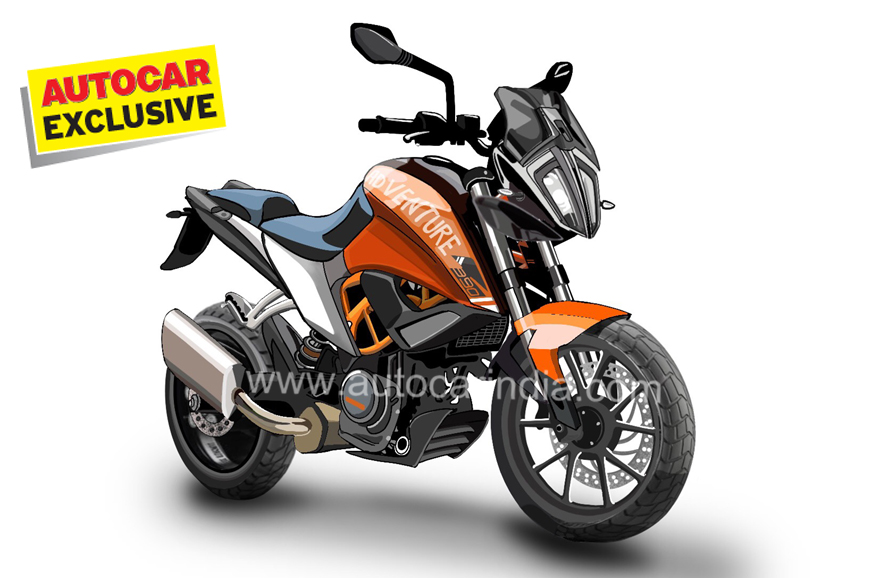
KTM’s 390 Adventure is one of the most-awaited motorcycles by enthusiasts in India, and the wait has been nothing short of agonising. We now have more good news! KTM is also working on a more affordable, 250cc version of the Adventure.
Like with the 390 Duke and 250 Duke, the two Adventure models will have a lot of similarities. The 250 Adventure is expected to share its styling and most of its hardware with the 390 Adventure. While the latter hasn’t been officially revealed yet, spy shots have shown us large parts of it.
What remains to be seen is how far KTM will go to differentiate between the two models in terms of cost. The difference could simply come down to different engines, like what is seen between the 125 and 390 Dukes in Europe. But if the company intends to approach it in the same manner as the 250 Duke, we could see the ADV bike run a halogen bulb-powered headlight instead of an LED headlight, and it could also miss out on the full-colour screen from the 390 Adventure. Further differences might come in the form of localised tyres instead of the Continental tyres the 390 Adventure has been spotted with.In terms of performance, expect to see similar numbers to the 250 Duke, perhaps with some tweaks to the engine tuning and gear ratios. We expect that the bike will be sold in BS6-spec, as will the 390 Adventure when it is launched. For reference, the 250 Duke’s motor makes 30hp and 24Nm of torque in BS4 form. Changes made to meet the more stringent emission norms could bring down the power figures, but that remains to be seen. The 250 Adventure will most likely run the same 19-inch front wheel and a 17-inch rear alloy wheel as the 390 Adventure.
The KTM 390 Adventure is slated to be unveiled at EICMA later this year, and the 250 Adventure will probably be by its side. We expect KTM to launch the 390 Adventure in India soon after, before the end of 2019, but it is unclear at this moment whether the 250 will be launched at the same time or if it will go on sale at a later date. The 390 Adventure is likely to cost close to the Rs 3 lakh mark (ex-showroom), which is still quite a high price point in our market. The addition of a 250 Adventure to the range will be clever move, because it will bring the price down while offering a calmer, yet still very decent level of performance, for the Indian riding environment. The wait continues!
from Autocar India - Bikes https://ift.tt/2NAa830
Wednesday, August 28, 2019
Samsung Galaxy A71, Galaxy A91 With Android 10 to Launch in 2020: Report
from NDTV Gadgets - Latest https://ift.tt/2L1fUJ6
Apple Says It's 'Eager' to Serve Customers at Its First India Retail Store
from NDTV Gadgets - Latest https://ift.tt/2ZxY0BN
Moto G8 Play Tipped to Feature MediaTek SoC, HD+ Screen, 4,000mAh Battery
from NDTV Gadgets - Latest https://ift.tt/2UbI9b0
Watch Meryl Streep Take on Gary Oldman in Netflix's The Laundromat Trailer
from NDTV Gadgets - Latest https://ift.tt/2LdfmPo
Apple Reportedly Fires Contractors Hired to Listen to Siri Recordings
from NDTV Gadgets - Latest https://ift.tt/2MK94tN
Review: 2019 Hyundai Grand i10 Nios video review
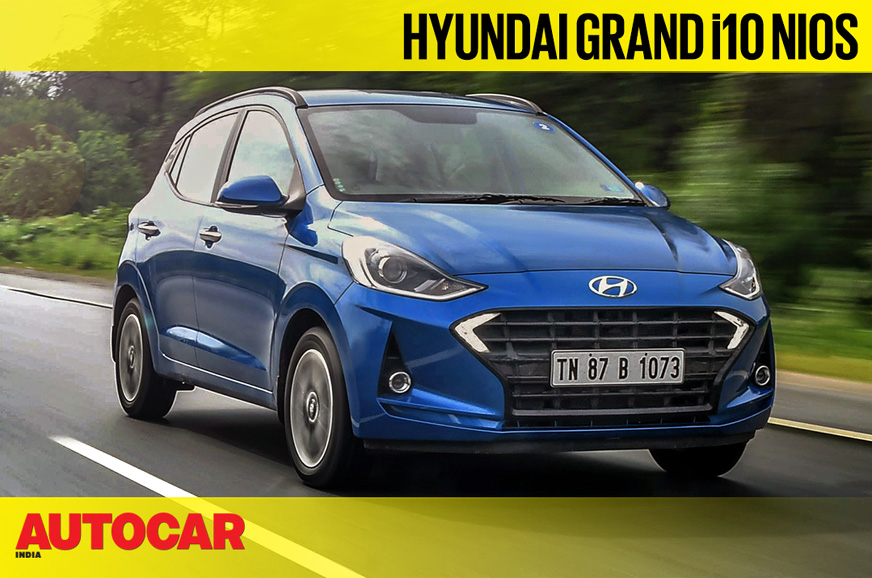
2019 Hyundai Grand i10 Nios video review
from Autocar India - Cars https://ift.tt/349LJXF
Review: 2019 Hyundai Grand i10 Nios review, test drive
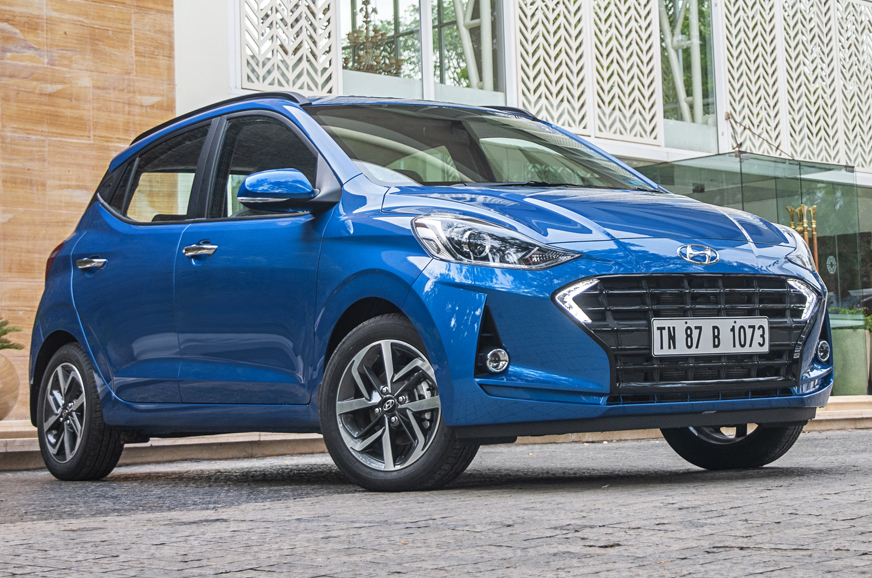
What is it?
The Grand i10 Nios comes as a gulp of fresh air in a market dominated by SUVs or crossovers, especially in 2019. It’s a hatchback – plain and simple – no added ground clearance, no black plastic cladding, no scuff plates, no pretence. And it sits in a critical point in the hatchback segment, which – SUV craze notwithstanding – will always be the core of the Indian market. It goes squarely up against the impressive Maruti Swift, which is the second-best-selling car in India.
‘Nios’, incidentally, means ‘more’, and signifies that this car offers more than the current Grand i10, which will continue to be on sale, albeit repositioned a little lower. You’ll remember this is what Hyundai did for the last generation too – the i10 lived on, while the ‘Grand’ moved in above it.
2019’s Nios nomenclature brings with it a number of changes, of course. It’s 40mm longer, 20mm wider, with 25mm more in the wheelbase, though the height remains the same. Much like the new Santro, it’s built on a modified version of the old car’s platform, that’s made up of 65 percent high-strength steel. This has actually allowed for a weight reduction of around 30-40kg compared to the old car. The 1.2-litre engines themselves haven’t changed, but the petrol is now BS6-compliant (the diesel will be upgraded later), and both are now available with manual and AMT gearbox options – just like the Swift.
What’s it like outside?
Thanks to the way Hyundai has proliferated its new design language around its model range, you won’t mistake this for a car from any other brand. Ironically, you might mistake it for a Santro from the front at first glance, thanks to its similar overall shape, the upswept headlamps and that big ‘cascading grille’.
A closer look, however, will reveal projector elements in those headlamps, low-set round fog lamps, and unique boomerang-shaped LED DRLs placed at the edges of the grille, identifying this as the Grand i10 Nios. That grille is a single-piece unit now –not split – and is finished in gloss black or silver, depending on your paint shade. Frankly, the way it extends down to the base of the bumper makes it look a bit out of proportion.
There are more nice details at the side, like sharper creases in the bodywork and 15-inch diamond-cut alloy wheels on the top Asta trim, or 14-inch gunmetal grey ones on the lesser Sportz variant. A detail whose execution I’m a big fan of is the textured blacked-out section in the C-pillar, with ‘G-i10’ embossed in it – it looks very classy. At the rear, the Hyundai ‘H’ has gotten positively huge, you’ll find a ‘shark fin’ antenna on the roof, and there’s even a chrome strip at the base of the tailgate. The relatively small tail-lamps do well to accentuate the car’s width, but there’s no escaping the fact that there’s a whiff of Tiago or Figo about their design.
What’s it like inside?
The more apparent leap forward comes once you step inside. The interior borrows much from newer and more expensive Hyundais like the Venue and Kona, and does a few things hitherto unseen in this segment. Things like the hexagonal textures on the dashboard, doors and by the gear lever – a simple, modern touch that gives the Nios a distinct identity. Similar is the use of light-grey plastics – rather than the usual black or beige – although it’s prone to catching dust and stains. There’s a part-digital instrument cluster – an analogue tachometer with the speedo and all other information on a 5.3-inch monochrome screen. And finally, the big, single-piece gloss-black binnacle that houses both the 8.0-inch touchscreen and the instrument cluster; it gives off a classy, Mercedes-like vibe.
Though it all looks very cool, it has to be said that material quality hasn’t taken a huge step up from the old car, as we’ve come to expect from every new Hyundai. There are even some bits, like the window switch array, that don’t feel so great to the touch.
Hyundai’s power play has always been to offer class-leading features, and they’ve attempted that here too. But you finally get a sense that they’ve reached saturation point with this car. The Swift and Figo each have a few features that the Nios doesn’t, like automatic headlamps and wipers, an auto-dimming rear-view mirror, Isofix child seat anchors, the option of six airbags and split-folding rear seats. But the Hyundai has a few tricks of its own, like wireless phone charging, rear AC vents and the ability to keep the rear-view camera feed on permanently via the 8.0-inch infotainment screen.
That touchscreen, incidentally, is the largest in class, and Hyundai’s operating system remains one of the slickest in the business. It misses out on the connected tech of the Venue – understandably at this price – but is otherwise loaded up with all the stuff you’d expect, and it’s dead easy to use. The part-digital cluster functions well, with the speedometer large and in the centre, but frankly, it feels more an aesthetic choice than a feature advantage to remove the analogue speedometer and extend the MID display.
It may have smoothened out in recent years, but the ‘tall boy’ design philosophy that started with the original Santro is still evident here, using height to maximise space. You’re perched relatively high up in the driver’s seat with a great view out despite that large instrument housing behind the steering wheel. The front seats have been given added side-bolstering to hold you in place, and it works, although those with larger frames might still find them a little small; they are well-cushioned though. Hyundai’s decision to skip leatherette upholstery and go instead with a nice textured fabric is one I rather like. It’s not your usual fabric seat material, and instead looks and feels far more chic.
Another thing worth commending is the space in the rear, which Hyundai says betters the Swift despite the Nios being smaller than the Maruti in terms of their exterior dimensions. It would seem so; clever packaging means the seat offers good space, comfort and support (thanks, again, to more bolstering all round), and you get a better sense of roominess thanks to the large glass area. The boot – at 260 litres – is right at par with the segment as well.
What’s it like to drive?
It’s no bad thing that Hyundai’s stuck with the same engines as before, as both 1.2-litre units are smooth, refined and well-suited to a car of this type – a small, urban hatchback. A bigger point to note in the scheme of things is Hyundai’s decision to retain its small diesel engine and eventually upgrade it to BS6 emissions standards, which could give it a big advantage over Maruti – the brand has chosen to remove diesel from its small cars entirely. We spent a good chunk of time with the diesel engine and its new 5-speed AMT gearbox, but we also drove the petrol with the manual gearbox.
The 1.2-litre, three-cylinder diesel engine has an audible clatter, but it’s not the worst around. Its 75hp and 190Nm are identical to what you get on the Swift’s outgoing 1.3-litre Multijet diesel engine. In the Grand i10 Nios, those numbers feel perfectly adequate. Power delivery is very smooth and linear and the only spoilsport in this case is the AMT gearbox, which does give you a bit of ‘head nod’ on shifts – more so when you attempt to press on quickly – although there’s always the manual shift mode to get around this if you’re in a hurry. That pause between gears aside, the AMT’s shifts themselves are smooth, and the diesel engine’s added torque means you can modulate the throttle to stay in one gear for most of your driving needs. That’s assuming your needs are focused in urban areas, because while it can hold its own, this powertrain doesn’t quite have the guts to be a highway star, like, for example, the Figo’s 1.5 diesel.
Even less suited to the highway is the 1.2 petrol. Its 83hp and 114Nm, again, mirror the Swift’s outputs, but despite this, its gearing and gentle power delivery meant it was never quite as exciting to drive. And now, after the measures put in to upgrade it to BS6, that power seems to have been sapped even more. Power delivery feels really flat at just about all engine speeds, and you really have to work the engine to pick up the pace. Even in flowing city traffic, you’ll find yourself in second, rather than third gear, in order to make smooth progress. Luckily, the gearshift and clutch action are as smooth as ever. A highway run is a relentless race for the redline that still won’t yield great progress, and the Nios petrol struggles beyond 100kph.
The dynamic setup of the Grand i10 Nios, as with all Hyundais, focuses more on ease of driving than fun. That said, there have been improvements this time around to at least make it more stable and reassuring. The steering, though still light enough, has a bit more weight and feedback to it now, and you no longer feel disconnected from the road at high speeds. It’s still not quite like the corner-carving Figo, but you now get a better sense of what the front wheels are doing.
The suspension? Well, that depends, again, on which car you’re driving. Our diesel-AMT test car was running 14-inch wheels and taller tyres (being the lesser Sportz trim), and its suspension setup is stiffer than the petrol car’s. The result was a more planted ride that soaked up some huge craters beautifully, albeit at low and medium speeds. The petrol Nios is set up a lot softer, particularly at the rear, and our top-spec Asta test car was on the 15-inch wheels. The result was a bouncier ride and some crashing through potholes. Neither version is ideal for the highway, but the diesel did inspire a bit more confidence.
Should I buy one?
It might not have dropped any segment-breaking features this time, but value still seems to be the Grand i10 Nios’ calling card, with a price that – spec for spec – undercuts its major rivals, even if only slightly. In this class, value is important, but then so is desirability. Hyundai’s done a great job here, with exteriors and interiors that feel modern and inviting. Ease of driving – a Hyundai strength – has returned, with an added sense of maturity to the dynamics. The engines are adequate, but not this car’s strongest suit – particularly the petrol – although the option of an AMT on both engines gives it a convenience not there before. The Nios comes across, as the name suggests, as ‘more’ than its predecessor. But with such strong rivals, is that enough? It’s a complete package, but too much of an evolution, with not enough revolution. We wish it shook things up more, as it would need to, in order to really put a dent in the Swift’s sales.
Click here for Hyundai Grand i10 Nios prices, reviews, images, videos and more details
Click here for Hyundai India models, prices, reviews, images, videos and more details
from Autocar India - Cars https://ift.tt/3445Ne5